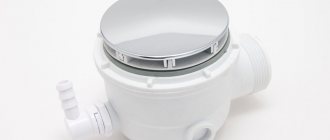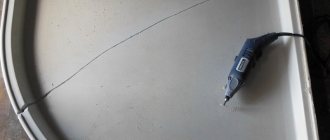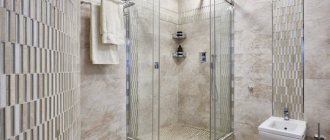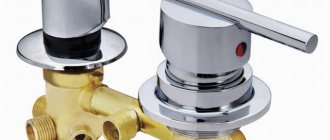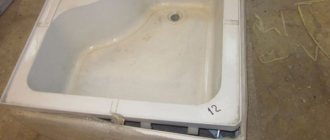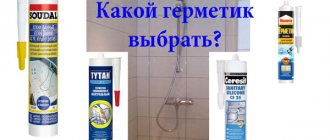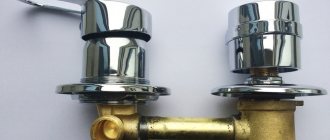Today, there are a wide variety of plumbing products on the market. One of the most familiar and firmly established devices in our everyday life is the shower stall. However, the apparent simplicity of the product, improper care or installation can lead to consequences such as leaks, the appearance of fungus, and malfunctions. Sometimes you even need to replace the shower stall.
Leaking showers are one of the most common problems. If you do not see it right away, the condensation will collect in a certain place and contribute to the formation of various types of mold fungi, which can harm not only the product, but also your health.
Why is it leaking from the shower stall?
The reasons may vary. First of all, the cabin may leak due to improper installation of the pan
When installing, it is important that the edges of the pallet fit snugly against the wall. In addition, some types of pallets have their own characteristics that must be taken into account during installation.
Often the shower stall constantly leaks due to a broken faucet or damaged water supply hoses. If this is the problem, then to eliminate the leak, the failed elements should be replaced.
However, most often shower stall leaks occur due to insufficient sealing of the seams. Even at the installation stage, the shower stall is carefully sealed, but over time, gaps can form, resulting in leakage from the shower stall. To eliminate this problem, resealing is necessary.
A clogged drain can also cause a leak. Therefore, it is necessary to monitor the cleanliness of the pan and prevent various debris from entering the drain.
The shower stall is leaking
for many reasons. To find out, you need to know well the features of all types of cabins. In addition, to eliminate a leak, it is often necessary to disassemble and reassemble some elements. Therefore, such work should be entrusted to professionals. Our technicians will quickly and reliably fix any leak, seal the seams, and also help you select spare parts. You can invite a specialist to your place by phone or online.
When the shower stall is assembled, or even has been in service for more than one year, it is possible that it will begin to leak. What to do in this situation, what actions to take? Let's look at the answers to these questions.
Shower stall leaking at the connection point to the water supply
There are two types of connecting the shower cabin mixer to the water supply system - via a flexible hose and by screwing it onto a pipe. In the first case, a polymer tube is used, which is wrapped in a metal braid and has two nuts at the ends. In this case, the connections do not require additional sealing, since the gaskets are already built-in. Long-term use leads to wear and loss of elasticity, which causes leaks. In this situation, the problem is solved by replacing the gaskets.
The second option for connecting to the water supply is screwing onto a pipe. These connections require additional sealing using different materials. In this case, simply repackage the connection by disassembling it and reassembling it.
If you do not have experience, proceed carefully and after completing the work, carefully check everything to ensure that there are no leaks.
Operating procedure
1. Using a wrench, pliers, or an adjustable wrench, remove the nut that secures the shower head. Do not apply excessive force; the nut may crack. And it’s good if it’s just a nut! If you overdo it, you can break the watering can and, worst of all, damage the pipe.
It will be easier to unscrew a “stuck” nut if you apply white lithium grease (for example, WD-40) to it and leave it for an hour. If nothing helps, you should think about replacing the entire shower - this is in any case cheaper than eliminating the consequences of rough unscrewing.
2. Remove the rubber gasket that is located inside the shower head and inspect it. If the pad has dried out and shrunk, or if it leaves black mucus on your fingers, it's time to replace it.
3. The new gasket must be the same size as the old one. so it's better to take it with you to the store as a sample. It also makes sense to buy several gaskets “in reserve”.
It hardly makes sense to change them for preventive purposes, but if the shower starts to leak, the problem can be solved instantly.
4. Install a new gasket into the shower head. It should go in with little effort. Make sure the gasket is level.
5. Wind plumbing tape onto the threads. It is better to use Teflon winding; it is a little more expensive than usual, but this slight difference in price is fully justified. The winding must be wound in the direction of the thread
Please note that the winding is wound only on the thread, without going onto the smooth parts. You need to wrap it tightly enough
The required number of turns is determined “by eye”: the thread should still be noticeable, but not sharply protruding.
To start, make no more than 2 turns. Excessive winding can cause a poor connection and therefore leakage.
6. Screw the shower head on by hand without tightening it too much.
7. Check! If there is no leakage or leaks just a little, you can tighten it, take a wrench and tighten the nut more. Just don't overtighten!
8. If the leak remains, you will have to rewind the thread. You may even have to choose a stiffer tape, especially if the threads are very worn.
9. Well, if several attempts are unsuccessful, you should stop them and change the shower.
Exactly the same steps:
- Replacing the gasket
- Wrapping with plumber's tape
- Assembly and testing
will also be required if a leak is detected at the junction of the shower head and hose.
https://sanvanich.ru
Leak in the cabin
What to do if you see that water is actually accumulating under the pan? First you need to determine the cause of the leak. It could be:
A deep crack in a pan cannot always be repaired. Sometimes you have to change the pallet.
- Cabin depressurization. A very common breakdown that leads to the formation of puddles. If low-quality sealant is used during the work or waterproofing work was carried out improperly (on a dusty and damp surface), then the cracks at the joints begin to let water through. Take a closer look to see if there are any visible defects or peeling of the sealant. If this particular problem has caused the shower stall to leak, then buy a high-quality waterproof sealant and seal the defect. Follow the instructions for applying the product indicated on the packaging.
- Low shower tray. This problem rarely occurs with hydroboxes, but the shower cabin can leak if the threshold at the tray is too low. It is almost impossible to solve such a problem. Just try to turn on the water not at full strength.
- The drainage system is leaking. If the fasteners are loosely tightened, then water from the cabin will not flow into the sewer, but under the pan. To make sure that it is the drainage system that is leaking, you need to close its hole and draw in a little water (if the height of the pan allows this). Let it sit for about an hour. If there is no water under the cabin, then open the drain hole and observe. If water starts to flow out, the problem is that the pipes are installed incorrectly or are loosely fastened.
- Pallet crack. For a long time it can go unnoticed and leak only when a person with a large weight enters the cabin. It is not always possible to fix this problem. If the crack is too deep or on a bend, the pan may need to be replaced.
- Problem with the door. Sometimes shower doors do not close tightly, have gaps and uneven glass. In such cases, moisture gets onto the floor. This problem is solved by a specialist when studying the cause of the leak. The cabin always leaks in one place. The leakage is aggravated when vertical massage jets are used in the cabin.
- The hydromassage panel is leaking. On the back wall of such a panel, very often there is no tray under the nozzles. They are the ones that leak. It is better to discuss this problem when purchasing a box, since there will be no one to file a claim after the purchase, and you will have to constantly wipe away the puddles that have accumulated under the pan.
A low sump threshold can cause the floor to flood; this cause cannot be eliminated.
If your shower stall is leaking, the first thing you need to do is look for the cause. If the cabin is leaking, but you cannot independently determine the cause of the breakdown, contact a master plumber. With hydroboxes, it is sometimes necessary to remove the side panel of the tray to check the condition underneath.
The situation when moisture remains invisible to the owners is more dangerous, since it will not be possible to identify the problem in time and eliminate it. As a result, mold will cover fairly large areas of the wall.
Add site to bookmarks
- Choice
- Installation
- Finishing
- Repair
- Installation
- Device
- Cleaning
Weak points in the pallet
Potentially dangerous in terms of leaks are the drain and overflow holes.
In them, fittings connected to the siphon are installed on gaskets.
The nuts on this fitting sometimes become loose, the pressure on the gasket weakens and water begins to seep into the gap between the pan and the gasket.
To identify this malfunction, you need to close the drain hole with a plug and collect a small amount of water into the pan (below the overflow hole).
Then you need to wait a while and see if water flows through the siphon. If it leaks, you need to tighten the drain funnel nut, and if this does not help, replace the gasket.
The tightness of the fittings in the overflow hole is checked in the same way.
What to do if the shower stall is leaking
- Choosing a shower tray type
- Pallet installation
- Sealing seams
Shower stalls can be classified as simple plumbing fixtures. However, the simplicity of their assembly quite often becomes the reason for ignoring multiple tips designed to help in operation. As a result, the shower stall leaks and users face great discomfort.
Diagram is an example of the dimensions of a corner shower stall.
A leaking shower stall is a very unpleasant problem that you won’t notice right away. Gradually, moisture will accumulate in a specific part of the bathroom and cause harm not only to the finishing material, but also to human health due to the formation of mold.
This can only be avoided by installing high-quality air ventilation and hoods in the room. Moreover, it is advisable to systematically clean and ventilate the bathroom. Otherwise, the problem may not be detected for a long time, which, in fact, will lead to the most unfavorable consequences. Thus, if you notice streams of water on the walls, you should immediately take care of resolving the problem.
What to do if there is a sewer smell coming from the drain?
It may be that you regularly clean the room, fill the plumbing with chemicals, but this does not help. And the unpleasant smell of sewage from the drain is still present, how can you remove it?
It is worth noting that sewerage is not always the source of an unpleasant odor. Shower trays are often made from acrylic. If the technology is violated, an unpleasant odor may come from the pallet. In some cases it can be eliminated.
We recommend that you read our special article on why an acrylic bathtub smells and what to do about it?
To fix the problem, you need to find out where it is coming from.
Why does the shower smell like sewer? The most common reason is improper plumbing design. If the siphon is installed according to the rules, then the water will go into the sewer, and a small part will remain in the pipe. This creates a water seal that prevents unpleasant odors from filling the apartment. When there is no water seal, the sewer smell goes directly into the bathroom.
Don't ignore the unpleasant smell of sewerage. Even if it does not affect your mood and general condition in any way, you need to remember that it is harmful to your health. Hydrogen sulfide and ammonia can have a detrimental effect on the respiratory tract.
If everything is in order with the siphon design, then the reason may be a damaged sewer pipe. If the tube has come loose and does not fit tightly to the riser, an unpleasant odor may appear.
In addition, the problem may lie in the fact that the remains of skin and debris that accumulate in the pipe begin to rot. If you are sure that everything is in order with the plumbing, then you need to clean the siphon using the methods that we wrote about above.
Pan diagnostics and repair
The base of the cabin plays one of the key roles: it holds the entire mass of a person and water is drawn into it. If the shower cabin is leaking from under the tray, then the cause is most likely a crack that has formed. Repair work is much cheaper than replacing the entire pallet. There are some disadvantages: in most cases the seam is very noticeable, but steel and cast iron models are generally better to replace. If you are planning a replacement, then acrylic and artificial marble are best suited.
To diagnose the quality of the pallet, they check whether the bottom bends under the weight of your body. Even with a slight bending (about five millimeters), you need to change or install new stands.
Often, a leak can be caused by a clogged drain system. It is advisable to take a drain with a circular cross-section along its entire length. If it has a different shape, it is replaced with a new one. And the sooner this is done, the better.
Diagnostics of the shower tray
For the production of shower trays the following is used:
- Acrylic;
- Kvaril;
- Steel;
- Cast iron;
- Artificial and cast marble;
- Fiberglass.
Reliable products include products made from quarry and cast marble, which can withstand heavy loads. Cast iron models are also durable, and options with an acrylic and steel base can bend under the heavy weight of the bather.
Photo: Cracked shower tray
The main reason for depressurization of the structure may be a crack in the pan, so we recommend giving preference to materials of increased strength to avoid such malfunctions. You can prevent the appearance of cracks by ensuring sufficient rigidity of the base, filling the space under the pallet with polyurethane foam or laying it out with bricks. In addition, it is necessary to avoid falling heavy objects that could damage the integrity of the base.
Leaks in equipment can occur if the seams between the pallet and the doors of the structure are poorly sealed. If the flush system becomes dirty, cleaning the drain system and removing stuck debris will help solve the problem.
The cause of the breakdown may also be poor-quality installation of the drain, due to which the waste does not flow into the sewer hole, but flows under the base. This can be eliminated by tightening the connecting elements, changing the gasket or the entire drain system.
Leaking walls and roof
If the shower stall leaks at the joints, the integrity of the structure is compromised.
A leak can form at the site of soft seals - cords on the doors, or hard joints - the places where parts are connected.
Important! If the cord itself is leaking, it will have to be replaced. It will definitely not be possible to revive him
When the shower stall is leaking at the seams, the action plan is quite simple:
- Unscrew the screws at the junction of the cabin elements;
- clean the remaining sealing agent without damaging the body of the parts;
- wipe the future joint areas dry;
- apply a thin layer of sealant;
- fasten the elements together.
Leaks at the junctions of the cubicle walls and the wall are eliminated by using additional sealants - plumber's rubber, mounted on fixing silicone.
If the faucet in the shower stall is leaking, and other plumbing elements are leaking at the junction with the shower body, then use gaskets and sealant.
Threshold leakage
Not all shower stalls have high thresholds, so water can overflow and find weak spots, flowing out. In this case, you will not be able to repair anything, since this is a common situation. Replacing the cabin under warranty in this case is also impossible, so in this case the right thing to do would be to simply take a shower more carefully.
If you are not concerned about the unaesthetic appearance of the shower cabin, you can fill all the cracks with a thick layer of sealant, having degreased everything in advance. It will look unattractive, and there is no guarantee that the sealant will not begin to pull away from the walls over time due to too thick a layer.
General rules for sealing joints
The problem with a leaking shower stall can be eliminated on your own if you adhere to the basic, fairly simple rules:
- All parts of the shower enclosure are installed in their places and secured.
- The connections are coated with silicone sealant until the entire booth is assembled. The fasteners should be located “outside” in relation to the place where the sealant is applied.
- The cabin elements are sealed, connected and fastened with bolts or screws. The next step is to seal the facial seams. Residues of silicone are removed in their raw form, carefully, without damaging the surface of the shower.
- The sealant must be used at the junction of the cabin parts with the sealing gaskets. They will serve as additional protection.
- If a leak is discovered after the shower has been completely assembled, then thoroughly dry the entire surface before reusing the sealant. This will ensure a tight fit of the silicone.
- Even after eliminating the problem, it is worth monitoring the integrity of the defective wall and monitoring the reappearance of the leak.
Attention! Not only the butt seams of the pallet and walls, fences, doors, but also additional plumbing equipment: pipes, hoses, siphon must be airtight. Sometimes it is enough to replace a few parts and the problem will be solved
But repair work will have to be done constantly
Sometimes it is enough to replace a few parts and the problem will be solved. But repair work will have to be done constantly.
A shower cabin is a multifunctional plumbing invention that allows us to turn a standard water procedure into pleasure with a multi-level shower, steam bath and even hydromassage. But over time, any technological equipment breaks down and requires repair, and the shower cabin is no exception.
Leaking side walls
For the production of the side walls of the units, tempered glass, plastic and acrylic are used, which can cause cracks and chips if used incorrectly. At the same time, glass structures are characterized by increased fragility, the acrylic surface is more resistant to impacts, plastic fails the fastest due to the low density of the material.
Photo: Wall crack
A leak in a shower unit can be caused by leaky seam connections between the side walls, tray and supporting wall. If the unit has a sealing cord, it will need to be completely replaced along the entire perimeter of the device.
The problem may be a loose fit between the unit and the tiles, the cause of which is the unevenness of the wall, which was not corrected in time at the preparatory stage before installing the shower enclosure. To further create a seal between the wall and the unit, plumbing rubber is used, which is secured with silicone.
Causes and their elimination
Depressurization of joints
A common cause is poor quality seam sealing. There are always certain gaps between structural elements, especially if the installation is not performed at the proper level. In this case, you should either replace the sealing elements or reapply the sealant so that all loose connections disappear.
When sealing a shower stall, special attention should be paid to the junction of the glass and the frame. This is where leaks are most often discovered later.
It should be noted that it is better to choose silicone sealant. It can be colored, transparent or white.
Instructions
So, before processing the joints around the perimeter of the shower stall, you should first assemble it. Next, using a sealing cord (included in the kit) and sealant, you need to seal all the joints so that water cannot penetrate beyond the boundaries of the cabin.
It should be noted that it is better to remove the remaining sealant while it is still wet. This will prevent the seal from being compromised. You can do this yourself, using, for example, a sharp stationery knife. Remember that before treating the surface it should be prepared. All joints must be dry and clean. This is the only way to guarantee the reliability of the connection of materials.
If the shower is leaking just a few years after the start of use, then it is worth checking the main elements for wear. After all, their integrity may be violated. Therefore, you need to use the cabin carefully, periodically clean it and monitor the tightness of the connections.
Other reasons
In addition to depressurization, there can be many reasons why a shower stall leaks. For example, the problem may be in the water supply and drain hoses. In this case, they need to be tested and the specific location of the leak determined. These are most often the junction points. In some cases, the hoses themselves may leak. Then they will have to be changed. However, it is better to buy not the first ones you come across, but well-known manufacturers. This will be the key to their reliable and durable operation. Therefore, this way you can protect yourself from similar problems in the future.
Also, do not forget that the cause of a shower stall leak may be poor quality assembly. But such problems should appear the first time the water is turned on. If this happens, you need to determine where the shower stall is leaking, and then disassemble it to this stage
When reassembling, you should pay most attention to this place, use sealant more carefully
Assembly, maintenance and high-quality materials - reliability and durability
If you assemble the shower cabin yourself, then you need to do it especially carefully so that there are no problems in the future.
And to do this, you should use only high-quality materials, as well as regularly perform cleaning procedures.
All this will be the key to long-term, problem-free operation. Additionally, you can watch a video on how to do this.
A shower leak is a rather unpleasant problem that may not be immediately noticed. Moisture can accumulate in any area in the bathroom for a long time, and thus cause harm to both the finishing material and human health.
To avoid such a problem, it is important to take care of the reliable sealing of the shower stall, and the bathroom must also have good ventilation, etc.
One of the reasons for a shower leak may be depressurization of the cabin. This happens if the seams were sealed with a poor-quality sealant, which dried out and began to let water through. Therefore, it is important to pay special attention to sealing the shower stall.
Design and necessary tools
The shower hose is the most frequently broken part of the shower; most often it begins to leak.
The design of the shower hose is a rubber tube placed in a metal sleeve. There may be no metal hose; in this case, the hose is a tube made of flexible plastic. The quality of the rubber part will determine the service life of the entire hose. The service life of a rubber tube, in turn, depends on water and is 5-15 years. Rubber tends to harden over time, the elasticity of the material decreases and this leads to the appearance of cracks and tears. These tubes are simply replaced. It is difficult to look for a replacement rubber tube for a shower, since most often replacement ready-made hoses with a metal sleeve are available for sale. And the cost of such a hose is not very high. Replacement is also carried out if the hose has a rusted metal sleeve. The aesthetics of such a faucet are generally worse, and rust can get on the enamel of plumbing fixtures, which is quite difficult to remove.
Before completely replacing the shower hose, you can try to repair it yourself, unless, of course, it is completely old.
To repair a shower if it breaks, you will need the following tools:
- adjustable wrench;
- screwdriver;
- knife.
This minimum will be a sufficient set, since it is not very difficult to troubleshoot problems with your own hands.
Leaking fixed parts roof, walls in the shower stall
Fixed parts leak less often, the reason is a violation of integrity. As a rule, water flows at the joints of parts or the inlet and outlet of cold and hot water.
Leaking cord seals
Seals can be of two types:
- soft (cord according to door movement);
- hard (at the joining of parts).
If the cord leaks, resuscitation measures will not be effective, so save time and change the cord immediately. If there is a leak at the junction of body parts, it is necessary to separate the parts by unscrewing the screws. Remains of sealant are removed from the parts without touching their body using a sharp knife. Fixing the problem is simple: apply a thin layer of colorless silicone to the dry, cleaned parts to be joined, and then connect the fasteners.
If there is a leak at the junction of the cabin and the walls, an additional seal is used - plumbing rubber bands, which are lubricated on both sides with silicone and then installed in the seat.
Leaking shower doors
You can watch the video to see what to do when the shower stall is leaking on the door. This is a fairly common question.
When the door is sliding, you first need to check the condition of the rollers and guides. It is necessary to find the gap while the door is moving. Sometimes it is worth removing the door and replacing the defective rollers, although they may well be repairable.
There are no components to eliminate defects in guides, but it is possible to manufacture them from stainless steel, directly according to the diameter of the pipe. This method will take a lot of time and effort. But this way they save money on buying a new pallet.
Replacement will depend on the type of structure and the material from which it is made. For example, curved glass is the most expensive. But today, numerous workshops offer their services for replacing curved glass doors. If the glass door is simply flat, then replacing it will not be difficult.
It is very easy to correct defects in swing doors. Often the problem is in the fastening loops. Leaks are eliminated by adjusting or replacing them.
Cleaning products
To clean the head of a regular or more difficult to clean rain shower on your own, you can use:
- special chemicals;
- folk remedies.
Application of chemical compounds
How to clean a shower sprayer from limescale and scale deposits? The easiest way is to use household chemicals, which differ:
- speed of cleaning;
- absence of negative impact on the body and other structural elements;
- efficiency.
The most popular means are:
- Cillit Bang;
- Toilet duckling;
- Mister Muscle;
Lime remover
Cleaning of scale and lime using household chemicals must be carried out in accordance with the instructions indicated on the packaging and in compliance with all safety rules.
Folk remedies
How to clean the inside of a watering can in the absence of specialized products? You can use traditional methods, among which the following are popular:
- vinegar. To carry out the procedure, use 7% vinegar. The use of essence is prohibited, as it negatively affects the body of the plumbing fixture. Cleaning is done as follows:
- the solution is prepared;
- all elements of the watering can are immersed in the solution for 6 – 10 hours (can be left overnight);
Using Vinegar
The elements are washed with running water.
For greater efficiency, the vinegar solution can be periodically heated to a temperature of 55° - 60°C.
- lemon acid. Cleaning is carried out according to a similar scheme. For full effect, it is enough to soak the watering can in the solution (1 sachet of citric acid is required for 1 liter of water) for 2 – 3 hours;
Technology of using citric acid
- a solution of soda, ammonia and table vinegar. For 1 liter of water you will need 3 tablespoons of soda, 350 ml of 9% vinegar and 150 ml of ammonia. For quick effects, it is recommended to heat the prepared solution to 60°C. Cleaning time ranges from 40 minutes to 1 hour;
- oxalic acid. In extreme situations, with a high degree of contamination, cleaning can be done using a solution of oxalic acid, which is purchased at a pharmacy. To prepare the solution you will need 1 liter of water and 2 tablespoons of acid. Processing time is 20 – 60 minutes.
Aggressive cleaning agent
When cleaning plumbing equipment by any means, it should be carried out exclusively with rubber gloves, since acid and other active substances can damage the skin of your hands.
After complete removal of contaminants, reassemble in reverse order.
When assembling, it is important not to forget to install all the O-rings and, if necessary, seal the connections of the shower head with the shower hose
To ensure that cleaning of plumbing equipment does not take much time, it is recommended to carry it out once every 6–8 months (if filters are available) and once every 4–5 months if such equipment is not available.
Troubleshooting yourself
Some types of breakdowns can be repaired yourself.
These include:
- You can repair the pallet yourself using glue. To do this, it must be thoroughly washed, dried and degreased. Then, putting on gloves and a respirator, start working. It is worth placing something solid under the pallet that will not allow it to sag as a result of pressure. Place a small piece of fiberglass in place of the crack, and apply glue on top with a spatula. Allow to dry for 24 hours, perform a similar procedure on the reverse side. The bottom of the pallet can be treated with polyurethane foam, which will prevent the crack from spreading further.
- Seam processing. You can apply sealant over the old dried layer, thereby compacting it. Sometimes the procedure needs to be repeated several times to achieve the desired result. But if this does not help, you will have to loosen the fastenings of the structure, remove the old sealant and reseal it. Then you need to remove the excess product and give it time to dry.
- Clear the blockage. It is possible using special chemicals developed for these purposes. You can buy them everywhere in household chemical stores, markets, and also order them in online stores. To remove the blockage, pour the required amount of product into the drain and wait a while. If the water does not go away, then you should call a plumber.
What to do if the doors in the shower stall are leaking
Let's start with the fact that doors can be hinged - swinging and on rollers - sliding. In sliding doors, the first thing to do is visually diagnose the condition of the guides and rollers. If there is any doubt, the door is removed by removing the locking stops, and the defective rollers are replaced. The roles can be revived.
It is more difficult to restore the guides, since there are no components. But there is experience when parts were made from stainless pipes. The pipe is bent along a radius, and the pallet is secured using through screws. The method is labor-intensive, but there is no need to buy a new pallet.
It is a rare case when the geometry of a segment door is violated or destroyed. The most expensive element in shower stalls is. The only way to reduce the cost of replacing an element is to send it to specialized glass workshops. On swing doors, defects occur on the fastening hinges. The repair consists of the following - adjust or replace the hinges.
Leak diagnostics
The appearance of puddles under the cabin only indicates the presence of a problem, but does not explain the reason for its occurrence. If the inspection of the shower stall did not provide an accurate explanation of the leak locations, do not despair, but show some technological tricks. Place paper under the bottom of the cabin; the drops that appear will indicate the location of their origin. If drops flow down uneven surfaces, then starch will help you. Apply white powder to the dry suspected leak area. Starch that has changed color under the influence of water will indicate the exact location of the problem.
Shower stall leaking
? This can be fixed! Experienced craftsmen will quickly deal with such a nuisance. They will determine the cause of the leak and carry out the necessary work to fix it. If you find that your shower stall is leaking, seek professional help as soon as possible. Otherwise, further operation may result in more serious problems. Our technicians have extensive experience working with shower cabins, so they will fix any problems professionally and quickly. You can leave a request on the website or by phone.
Main reasons to contact us:
- Our specialists work with shower cabins of all types and brands
- We guarantee an individual approach to each case
- Our company's specialists will perform the work efficiently and in the shortest possible time.
- You pay for the work only after it is completed
- Our specialists will come to any district of Moscow and the nearest Moscow region
Cracked pallet
Acrylic pallets, as is known, are characterized by low strength, so if handled carelessly, both during operation and during delivery, a crack may well appear.
It happens that at first it does not leak - water appears only after the shower cabin has been used by one of the guests with a larger build than that of regular users.
If the crack is small, you can try to repair the pallet. They operate in the following sequence:
- The product around the crack is sanded, both from the front and the “wrong” side. This is necessary to improve adhesion.
- The treated area is washed, dried and degreased.
- Apply a small amount of epoxy resin, embed the fiberglass patch in it, and then apply another layer of epoxy.
- After the resin has cured, repairs are made in the same way on the back side of the pallet.
- To reduce the deflection of the pallet in the damaged area, a layer of polyurethane foam is applied on the reverse side.
Work with epoxy resin in a ventilated area, wearing a respirator with solvent cartridges.
Diagnostic work
When water leaks from under the shower stall, it can be difficult to determine the location of the leak. It is not always possible to identify a defect after a simple inspection of the booth. There is a technological trick - a sheet of paper is placed under the pan, the drops will be approximately oriented to the location of the leak or indicate the direction of search.
Starch is used to detect leakage. With its help you can detect even the most inconspicuous and hidden cracks and gaps. It is worth turning off the water taps. The cabin is completely dried and a thin layer of starch is applied to “doubtful” areas. The product will change color when exposed to moisture, after which work can begin to repair the leak.
Causes of clogging
The main reasons for a clogged shower head are:
- low quality of supplied water. Due to the quality of water, limescale deposits form on the body of plumbing equipment, which leads to a gradual reduction in the passage holes;
- the absence of filters in the water supply system that can retain particles of sand, rust and other pollutants at the entrance to the system.
Filtration of water before supply to plumbing
To reduce the frequency of shower head cleaning, it is recommended to install equipment made of copper or stainless steel. Plastic products are more susceptible to clogging with small particles, while steel products are more susceptible to corrosion.

